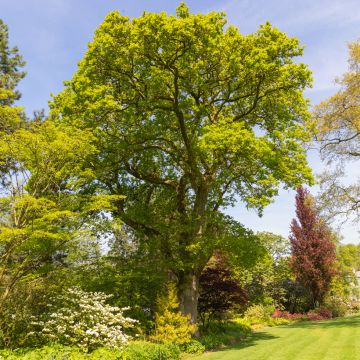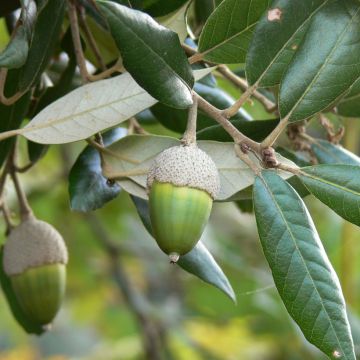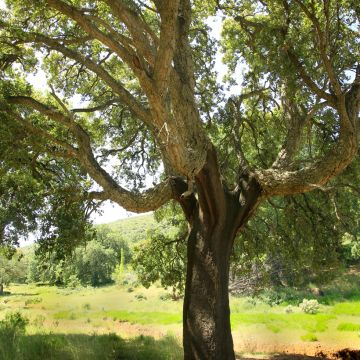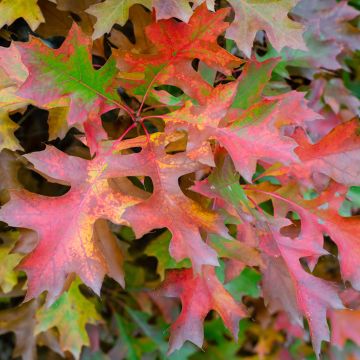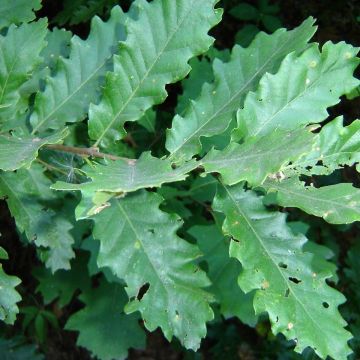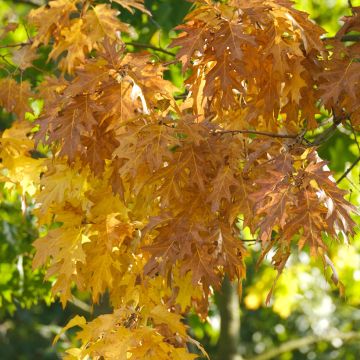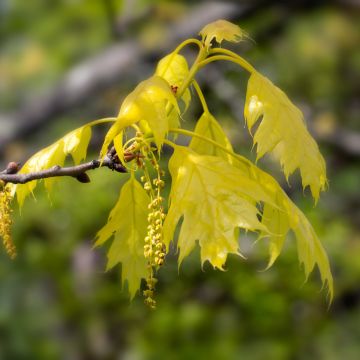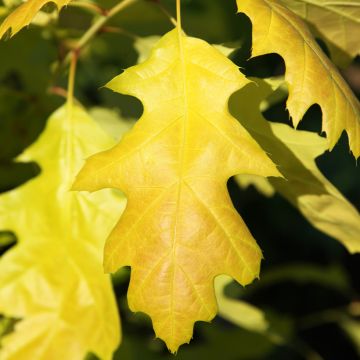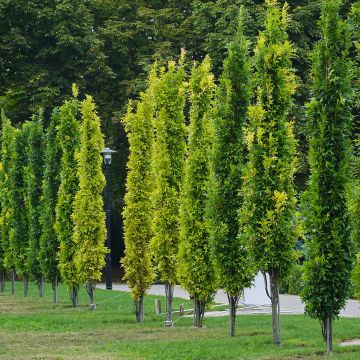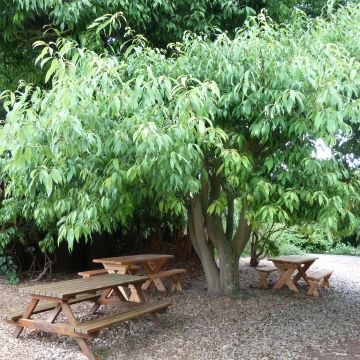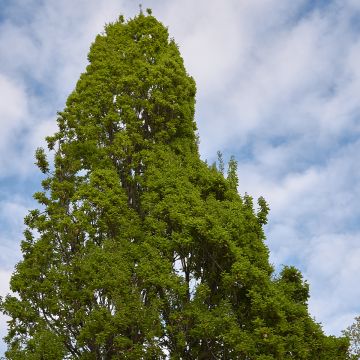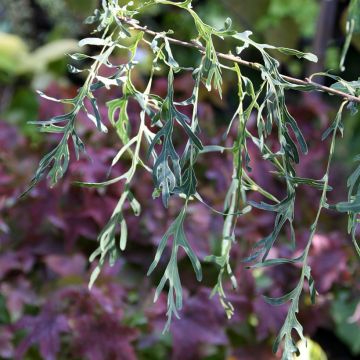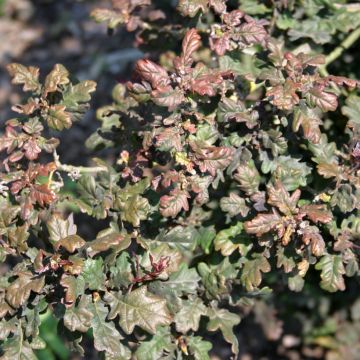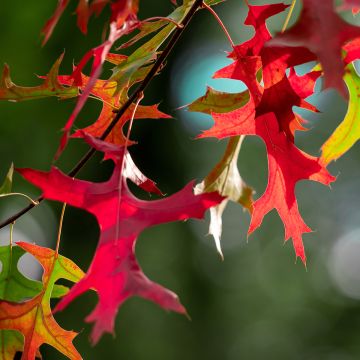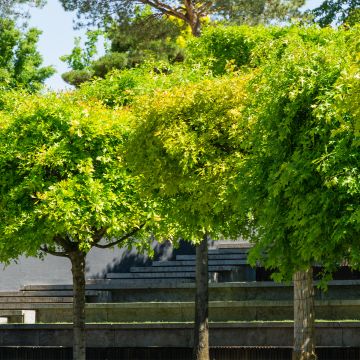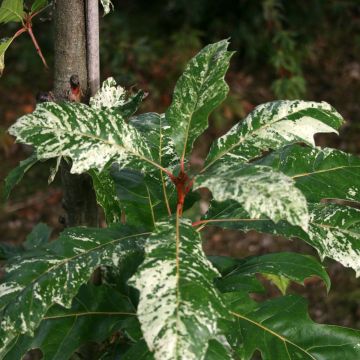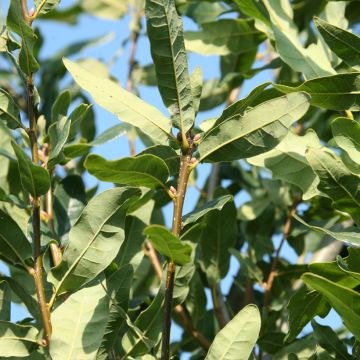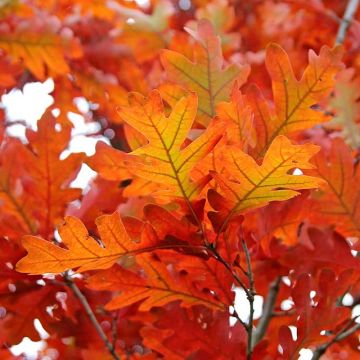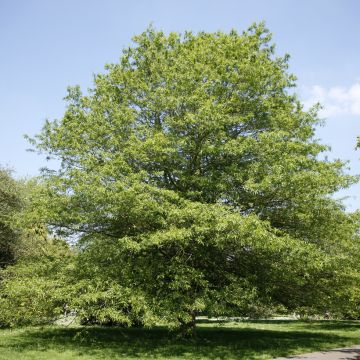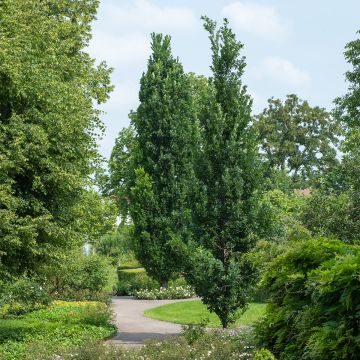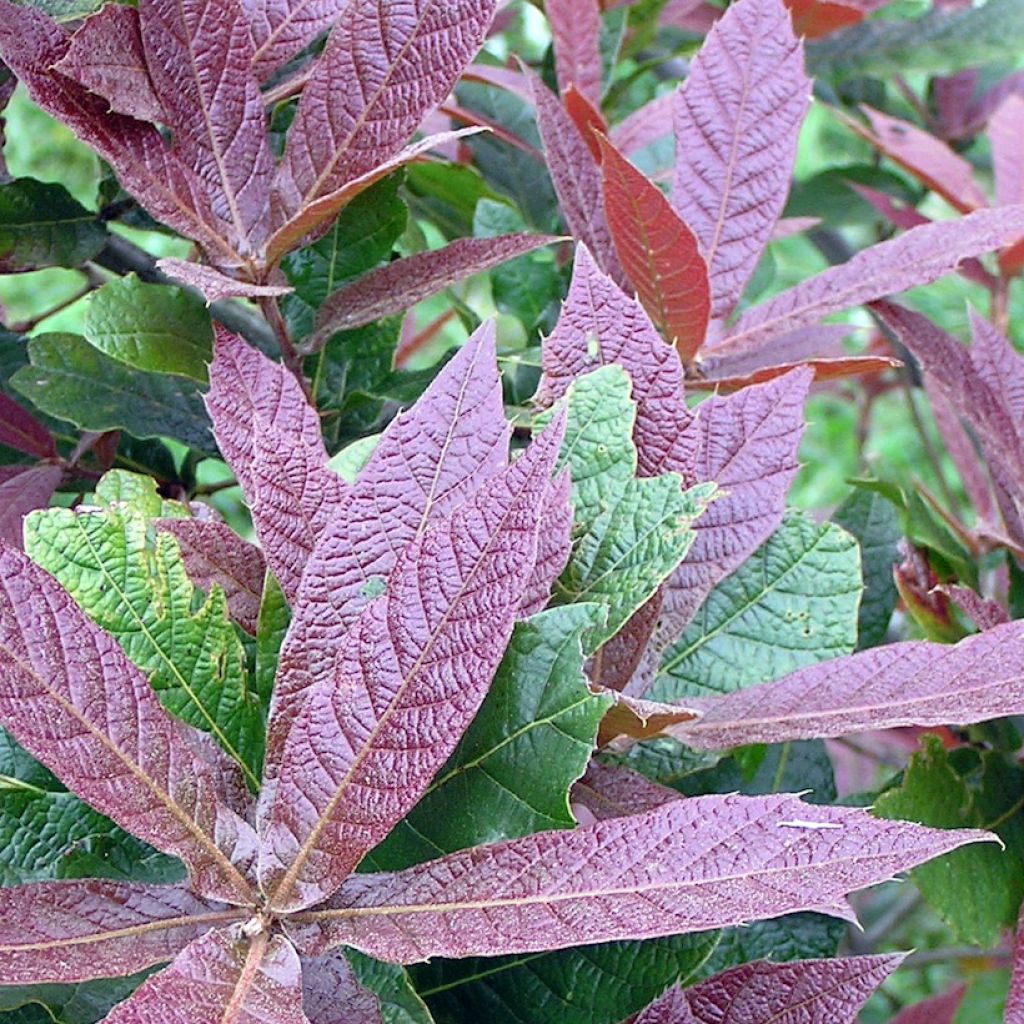

Quercus rysophylla Maya
Quercus rysophylla Maya
Quercus rysophylla Maya
Loquat Oak
Why not try an alternative variety in stock?
View all →This plant carries a 24 months recovery warranty
More information
We guarantee the quality of our plants for a full growing cycle, and will replace at our expense any plant that fails to recover under normal climatic and planting conditions.
From €5.90 for pickup delivery and €6.90 for home delivery
Express home delivery from €8.90.
Delivery to Corse prohibited: UE law prohibits the import of this plant from mainland France to Corse as part of the fight against Xylella fastidiosa. Please accept our sincere apologies.
More information
Does this plant fit my garden?
Set up your Plantfit profile →
Description
Quercus rysophylla Maya is a Dutch selection derived from a rare evergreen Mexican oak in cultivation sometimes called the Loquat Oak. This cultivar distinguishes itself from the species by increased hardiness, smaller size, and intensely red-bronze to copper-red young shoots. This tree is suitable as a stand-alone specimen or in an informal hedge, in medium to small-sized gardens. It is adorned with large, wavy, tough, elliptical leaves of a shiny dark green, attractive even in winter. It is undemanding regarding soil, but it dislikes limestone soils.
Quercus rysophylla 'Maya' is a horticultural hybrid of Q. rysophylla obtained by Biloba nurseries in the Netherlands in 2006. The Loquat Oak, also known by its Latin name Quercus sierramadrensis, belongs to the beech family. It is native to the mountains of the Sierra Neuvo in northeastern Mexico, where it grows at altitudes ranging from 600 m (1968ft) to 1900 m (6234ft). It is a sun-loving species that tolerates any acidic soil, even dry and poor ones. This Maya variety is also more wind-resistant.
The growth of this Maya oak is fast; it reaches an average height of 8 m (26ft) and a spread of 4 m (13ft) at maturity. Its habit, rather narrow and conical during its youth, becomes more rounded over the years. Its trunk and very robust branches are covered with a dark grey bark, smooth in its youth and heavily fissured, exfoliating in large plates. From the trunk, upright branches reach towards the sky, forming a rounded, semi-open crown. Its young twigs are dark olive green. The characteristic foliage consists of evergreen, tough, thick, lanceolate to elliptical leaves, with few teeth, reaching up to 25 cm (10in) in length. The young shoots are beautifully coloured. The colour of the lamina then evolves from light and vibrant green to shiny dark green in summer, with the lower surface covered in a silvery down. The flowering of this oak occurs in May in the form of inconspicuous catkins. They give way to ovoid and glabrous acorns, ranging from 0.9 to 1.7 cm (1in) in length, of a light brown colour.
Quercus rysophylla 'Maya' is a perfectly hardy oak. It can be planted as a solitary specimen or in an avenue. Its modest size allows it to enhance a lawn in a small garden. It also has the advantage of adapting to dry and poor soils, allowing owners of less favourable land to enjoy a very beautiful shade tree, with decorative evergreen foliage all year round. It could also be used in an informal hedge with maples, lime trees, and sophoras in a large garden.
Report an error about the product description
Plant habit
Flowering
Foliage
Botanical data
Quercus
rysophylla
Maya
Fagaceae
Loquat Oak
Cultivar or hybrid
Other Oak
Planting and care
Quercus rysophylla 'Maya' should be preferably planted in spring or autumn in a non-calcareous and deep soil. It is a hardy variety up to -20°C (1°F) and clearly prefers acidic soils. This oak tolerates poor soils, even quite dry ones in summer once it is well rooted. It should be planted in a sunny position. Stake the young plants. Pruning is unnecessary, except for young trees that do not grow in a balanced manner. In February, before the start of vegetation, remove dead or diseased wood that hinders the habit of the tree.
Planting period
Intended location
Care
This item has not been reviewed yet - be the first to leave a review about it.
Haven't found what you were looking for?
Hardiness is the lowest winter temperature a plant can endure without suffering serious damage or even dying. However, hardiness is affected by location (a sheltered area, such as a patio), protection (winter cover) and soil type (hardiness is improved by well-drained soil).

Photo Sharing Terms & Conditions
In order to encourage gardeners to interact and share their experiences, Promesse de fleurs offers various media enabling content to be uploaded onto its Site - in particular via the ‘Photo sharing’ module.
The User agrees to refrain from:
- Posting any content that is illegal, prejudicial, insulting, racist, inciteful to hatred, revisionist, contrary to public decency, that infringes on privacy or on the privacy rights of third parties, in particular the publicity rights of persons and goods, intellectual property rights, or the right to privacy.
- Submitting content on behalf of a third party;
- Impersonate the identity of a third party and/or publish any personal information about a third party;
In general, the User undertakes to refrain from any unethical behaviour.
All Content (in particular text, comments, files, images, photos, videos, creative works, etc.), which may be subject to property or intellectual property rights, image or other private rights, shall remain the property of the User, subject to the limited rights granted by the terms of the licence granted by Promesse de fleurs as stated below. Users are at liberty to publish or not to publish such Content on the Site, notably via the ‘Photo Sharing’ facility, and accept that this Content shall be made public and freely accessible, notably on the Internet.
Users further acknowledge, undertake to have ,and guarantee that they hold all necessary rights and permissions to publish such material on the Site, in particular with regard to the legislation in force pertaining to any privacy, property, intellectual property, image, or contractual rights, or rights of any other nature. By publishing such Content on the Site, Users acknowledge accepting full liability as publishers of the Content within the meaning of the law, and grant Promesse de fleurs, free of charge, an inclusive, worldwide licence for the said Content for the entire duration of its publication, including all reproduction, representation, up/downloading, displaying, performing, transmission, and storage rights.
Users also grant permission for their name to be linked to the Content and accept that this link may not always be made available.
By engaging in posting material, Users consent to their Content becoming automatically accessible on the Internet, in particular on other sites and/or blogs and/or web pages of the Promesse de fleurs site, including in particular social pages and the Promesse de fleurs catalogue.
Users may secure the removal of entrusted content free of charge by issuing a simple request via our contact form.
The flowering period indicated on our website applies to countries and regions located in USDA zone 8 (France, the United Kingdom, Ireland, the Netherlands, etc.)
It will vary according to where you live:
- In zones 9 to 10 (Italy, Spain, Greece, etc.), flowering will occur about 2 to 4 weeks earlier.
- In zones 6 to 7 (Germany, Poland, Slovenia, and lower mountainous regions), flowering will be delayed by 2 to 3 weeks.
- In zone 5 (Central Europe, Scandinavia), blooming will be delayed by 3 to 5 weeks.
In temperate climates, pruning of spring-flowering shrubs (forsythia, spireas, etc.) should be done just after flowering.
Pruning of summer-flowering shrubs (Indian Lilac, Perovskia, etc.) can be done in winter or spring.
In cold regions as well as with frost-sensitive plants, avoid pruning too early when severe frosts may still occur.
The planting period indicated on our website applies to countries and regions located in USDA zone 8 (France, United Kingdom, Ireland, Netherlands).
It will vary according to where you live:
- In Mediterranean zones (Marseille, Madrid, Milan, etc.), autumn and winter are the best planting periods.
- In continental zones (Strasbourg, Munich, Vienna, etc.), delay planting by 2 to 3 weeks in spring and bring it forward by 2 to 4 weeks in autumn.
- In mountainous regions (the Alps, Pyrenees, Carpathians, etc.), it is best to plant in late spring (May-June) or late summer (August-September).
The harvesting period indicated on our website applies to countries and regions in USDA zone 8 (France, England, Ireland, the Netherlands).
In colder areas (Scandinavia, Poland, Austria...) fruit and vegetable harvests are likely to be delayed by 3-4 weeks.
In warmer areas (Italy, Spain, Greece, etc.), harvesting will probably take place earlier, depending on weather conditions.
The sowing periods indicated on our website apply to countries and regions within USDA Zone 8 (France, UK, Ireland, Netherlands).
In colder areas (Scandinavia, Poland, Austria...), delay any outdoor sowing by 3-4 weeks, or sow under glass.
In warmer climes (Italy, Spain, Greece, etc.), bring outdoor sowing forward by a few weeks.

































